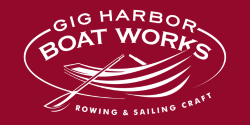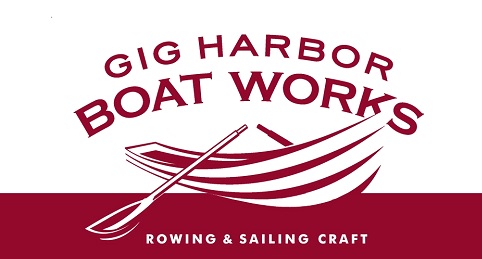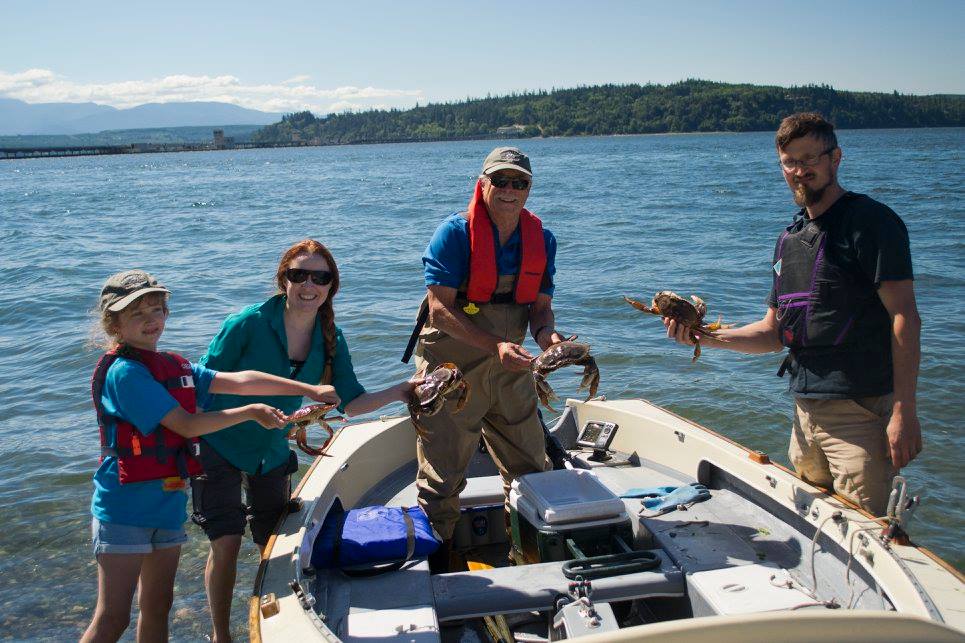One of the key signs that summer is here in the Puget Sound is the arrival of crab season… when our local waters are suddenly dotted by the red and white buoys that indicate a forest of crabpots hidden beneath the surface. If you’ve got a GH Boat that’s been sitting idle, waiting for an excuse to get put to work, there is no better occasion than this!
For newbies to crabbing, The Washington State Department of Fish & Wildlife has a detailed guide to the rules and regulations, including maps of the different crabbing areas so you can make sure you’re fishing within legal boundaries. You’ll need a shellfish license with the optional crab endorsement. Heads up, there’s no crabbing allowed in the Vashon/Quartermaster Harbor or South Puget Sound areas this year!
Our family’s favorite boats to take out crabbing in our local waters are the 15′ Lobster Boat and the 12′ Point Defiance. The Lobster Boat has a planing hull, so if you need to go a little bit farther to get to your preferred crabbing grounds you can travel quickly with an outboard motor. There’s plenty of space to carry your crab pots, bait, bucket, and a cooler for your lunch/refreshing beverages. (Pro tip: if you empty the cooler, you have another container for all those crab.) 😉
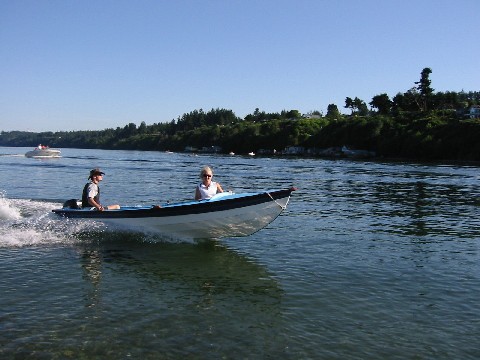
Falk and Jan in the 15′ Lobster Boat, planing with outboard motor
We also like to use the Point Defiance because it is a nice manageable size, and a pleasure to row or motor out for shorter trips to and from shore. We’ll do a family day at the beach, taking turns going out to check the pots every couple of hours, digging clams, eating a picnic lunch and playing games.

Dave with a Point Defiance on the beach at Blake Island
In addition to the all-important boat, we’ve got a few accessories with us that make things easier (and makes pulling pots feel less like work!):
- Keep a waterproof, resealable bag handy to store your shellfish license and a pen. It might be worth investing in a sturdier plastic outdoor bag or pouch that you can temporarily attach to your belt/life-jacket so you make sure you always have your license and catch card on you while you’re crabbing. The WDFW does come around to check, and you’d better believe that the one time you forget your card on the beach will be the time they spot you. Mark your catch card the moment you pull a keeper from your trap!
- A Thomas Pocket Puller is a pulley device that fits into the oarlock and holds the rope away from the boat’s trim as it comes out of the water. It protects the trim from the friction of the rope, and also makes things easier on your back! (P.S. also be sure to bend from your hips as you pull instead of rounding your back… your spine will thank you later!)
- Some tough, waterproof rubber gloves also help you keep a grip on the rope and prevent fatigue in your hands as you pull pots.
- Automatic-Inflatable PFD Life Jackets keep you protected with less bulk, so you have better range of motion than traditional PFDs.
- Pick up a crab-measuring ruler from the store where you buy your shellfish license, and keep it in the boat. Super quick and easy to use, with no guesswork.
- The quality of your crab pot will make or break your crabbing trip – use a sturdy pot with good trap doors that will keep any sizeable crab inside, but that also will let you open up the top pretty quickly so you don’t have to struggle for access. If your pot doesn’t have a built-in bait container, make sure to fasten it into the middle of the pot with some zip ties and use big pieces of bait so that the sneaky buggers can’t walk away with it! We’ve seen good affordable recreational crabpot kits that include trap, buoys, and line at West Marine and even at our local Costco during crab season.
- Make sure you’ve got a bucket handy that you can put your crab in, and cover them with seawater so they stay alive until you’re ready to cook them.
And some other final insider tips:
- While Dungeness Crab gets all the attention, don’t feel too disappointed if all you end up with in your pot are Red Rock Crab. We’ve decided that they’re every bit as tasty as Dungeness, in fact the meat has a bit more intense flavor, but with the tougher shells it just takes little bit more work to get at it.
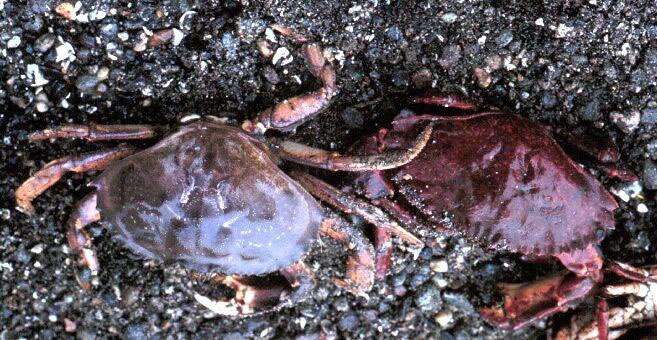
Dungeness (left) vs Red Rock (right)
- Cleaning a crab by removing the back carapace before you cook it is not for the faint of heart, but it kills the crab instantly, helps to keep the body meat clean, and makes the tableside experience much more enjoyable. If that’s a little too intense for you, of course you can also cook the crab by putting them in a pot of boiling water with a lid (heating the water up gradually will minimize thrashing if that part stresses you out).
- Boiling the crabs with a bit of vinegar, lemon juice, and/or white wine never hurts. While you’re waiting for the crab to cook, put a reminder on your calendar to submit your catch record card at the end of the season (you can do it online). Otherwise you’ll find yourself needing to pay a fine when you renew your license next year!
- Get a couple of good sturdy crab crackers and picks. We think crabmeat is best served chilled and eaten straight out of the shell, dipped in melted butter.
Happy crabbing, Puget Sounders!
